The core CPI index finally embarked on a downward trend in July, as the annual rate of inflation fell from 8.5% to 6.1%.
However, while this has moved inflation down towards the Bank of England’s (BoE’s) target of 2%, the cost of goods and services remains disproportionately high for the time being, while further base interest rate hikes may be prescribed before the end of 2023.
While the impact of inflation on households is widely discussed, this can also prove detrimental to businesses. In this article, we’ll explore this theory in a little more detail, while asking how businesses can cope with inflation in the coming months.
Exploring the Theory – How Does Inflation Impact Businesses?
Before we look at how your business can cope in the current macroeconomic climate of high inflation and increased interest rates, let’s consider the theory that underpins the rising cost of living and its practical implications.

Dealing with Increased Operating Costs
One of the most direct impacts of inflation on businesses is the rise in operating costs, which may dictate an increase in how much companies must spend on raw materials, energy and labour over time.
Theoretically, heightened inflation and rising labour costs create a damaging cycle, which will begin to squeeze profit margins and the viability of a business over time. If firms hike their prices to counteract this, customers will see their own cost of living rise further.
Uncertainty and Decreased Investment Levels
Inflation has the potential to cause significant uncertainty and volatility in the economy, with businesses bearing the brunt of this. Within a very short period of time, sentiment among investors may begin to cool, while businesses will find it increasingly difficult to predict their future costs and revenues. These factors will prevent companies from making long-term investments in new projects and labour, potentially impacting economic growth and employment rates over time.

The Impact on Consumer Behaviour
Heightened inflation certainly has a direct impact on consumer behaviour, primarily by reducing their average spending (particularly on non-essential goods). This disproportionately impacts companies that rely heavily on discretionary spending, which may revolve around entertainment, luxury goods or services and automobiles.
This can create further downward pressure on prices, which either squeeze profitability further or discourage competition in the marketplace.
How to Negate the Inflation Crisis of 2023
While these distinct challenges are omnipresent in the current macroeconomic climate, not all economic downturns or issues are created equal.
So, what steps can you take to future-proof your business during the current period of inflation?

1. Manage and Minimise Your Debt
Inflation has a significant impact on debt, and this can be compounded by simultaneous interest rate hikes.
For example, the nominal value of debt can either decrease or increase during periods of inflation, but when this phenomenon is combined with rising interest rates, businesses will often be faced with higher debt repayments over time.
Of course, the hope is that a higher base interest rate will eventually reduce inflation (these two economic factors enjoy an inverse relationship), but huge challenges are created in the meantime.
2. Consider Product and Market Diversification
The advent of forex arbitrage software and similar tools has created a significant rise in retail FX trading. An example of such software is MetaTrader, which offers various options, with the latest versions being MetaTrader 4 (MT4) and MetaTrader 5 (MT5), ideal for engaging in speculative trading and diversifying your portfolio to minimize the impact of inflationary pressures.
The good news is that businesses can also diversify aspects of their venture. For example, they may look to modify or introduce new product lines, some of which may be in higher demand during times of economic contraction. This process helps to reduce their reliance on specific products, while the same principle applies to targeting brand-new demographics or geographical markets.
Exploring geographical markets that may not be as vulnerable to inflationary risks can be highly appealing, while it certainly has the potential to enhance your company-wide profit margins.

3. The Importance of Risk Management
Last, but not least, we come to the notion of risk management, which is also integral to the actions taken by both entrepreneurs and investors.
Make no mistake; the implementation of risk management strategies (like hedging against commodity price fluctuations or locking in favourable long-term futures contracts) can really help to safeguard your business during peak periods of inflation while revising your pricing may also help you to be more competitive and minimise the risk of financial loss.
Such measures can also be combined to create a relative period of financial stability for your business, so it’s a key strategy when coping with the current macroeconomic climate.
Author Profile
- CEO - ClickDo™ & SeekaHost™ | Started as an SEO Consultant and helped over 400 UK business owners grow their business with online marketing and Google advertising. More details about Fernando Raymond are available at www.fernandoraymond.com.
Latest entries
 BusinessFebruary 24, 2025The Cost of Owning a Business in London
BusinessFebruary 24, 2025The Cost of Owning a Business in London Business AdviceDecember 26, 2024Hybrid Cloud Infrastructure – 5 Pros and Cons of a mixed Computing Environment
Business AdviceDecember 26, 2024Hybrid Cloud Infrastructure – 5 Pros and Cons of a mixed Computing Environment Business AdviceAugust 7, 2024What is SEO & Link Building & Why Should Business Owners Care
Business AdviceAugust 7, 2024What is SEO & Link Building & Why Should Business Owners Care Business AdviceMarch 28, 2024Streamlining Operations – Innovative Solutions for Modern London Businesses
Business AdviceMarch 28, 2024Streamlining Operations – Innovative Solutions for Modern London Businesses




